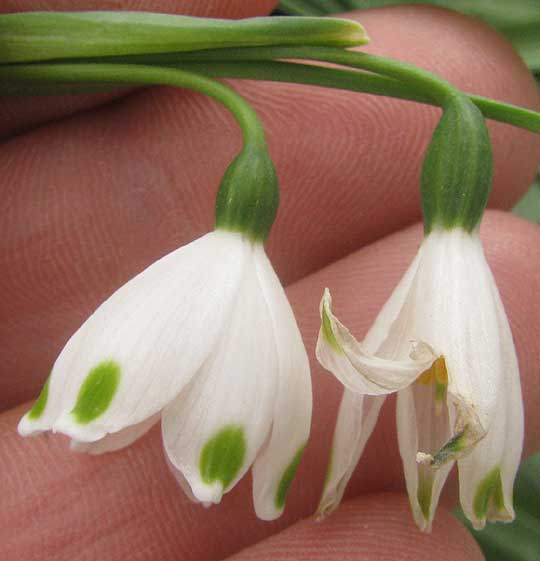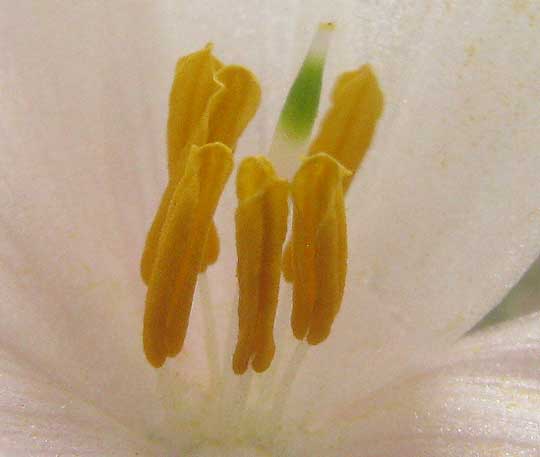Excerpts from Jim Conrad's
Naturalist Newsletter

from the March 9, 2014 Newsletter issued from the Frio Canyon Nature Education Center in the valley of the Dry Frio River in northern Uvalde County, southwestern Texas, on the southern border of the Edwards Plateau; elevation ~1750m (~5750 ft); N29.62°, W99.86°; USA
SNOWFLAKES FLOWERING
In Uvalde but not here higher up, the Snowflakes, LEUCOJUM AESTIVUM, are flowering in people's front yards, shown above. In that picture, notice how the flower stalks, or pedicels, of each blossom are longer than the leaf-like blade, or spathe, from which they emerge, and that several flowers arise from each spathe, not just one. These features help distinguish this from other Leucojum species which also are called snowflakes. A flower close-up showing other distinctive features is seen below:

The green spots are shared with certain other species, but not the added combination of several flowers arising from each spathe, and the petal-like "tepals" being of nearly the same length, instead of the flower being a little lopsided. If you see similar clusters of flowers bearing green spots but the blossoms' tepals are of obviously different lengths, probably you have a Snowdrop, genus Galanthus. The names Snowflake and Snowdrop, at least in garden catalogs, normally are applied to different plants.
A peep inside a Snowflake blossom showing six stamens with long, yellowish, pollen-producing anthers surrounding a slender, pale but green-spotted style is shown below:

Snowflakes emerge from underground bulbs and belong to the Amaryllis Family, the Amaryllidaceae. They are native to central and southern Europe, from the Pyrenees to Romania and western Russia, but have been introduced and "gone wild" in many places, including along North America's eastern coast.
The species has given rise to several cultivars, including the large-flowered 'Gravetye Giant' and the robust ‘Podpolozje.'